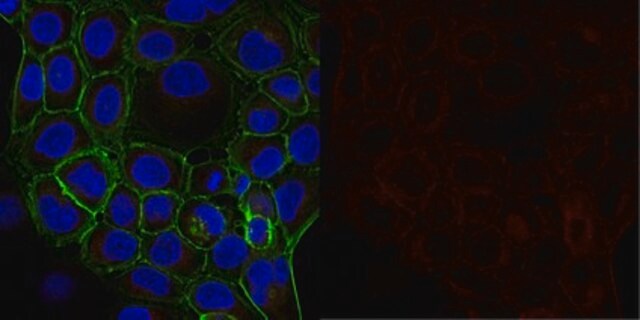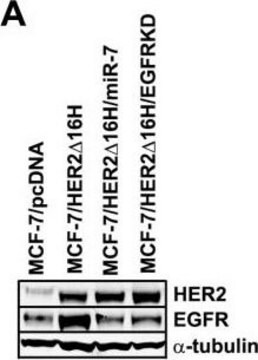16-232
Anticuerpo anti-α-tubulina, clon DM1A, conjugado con Alexa Fluor™488
clone DM1A, Upstate®, from mouse
Sinónimos:
Alpha-tubulin 3, Tubulin B-alpha-1, Tubulin alpha-3 chain, tubulin, alpha 1a, tubulin, alpha 3, tubulin, alpha, brain-specific
About This Item
Productos recomendados
biological source
mouse
Quality Level
conjugate
ALEXA FLUOR™ 488
antibody form
purified antibody
antibody product type
primary antibodies
clone
DM1A, monoclonal
species reactivity
rat, mouse, guinea pig, human, pig, bovine, avian
manufacturer/tradename
Upstate®
technique(s)
flow cytometry: suitable
immunocytochemistry: suitable
immunofluorescence: suitable
western blot: suitable
isotype
IgG1
NCBI accession no.
UniProt accession no.
shipped in
wet ice
target post-translational modification
unmodified
Gene Information
human ... TUBA1A(7846)
General description
Specificity
Immunogen
Application
2 µg/ml de un lote anterior detectaron la α-tubulina en lisados RIPA de células A431.
Inmunocitoquímica:
2 µg/ml de un lote anterior mostraron inmunotinción positiva para α-tubulina en células HeLa.
Quality
Citometría de flujo:
0,2 μg de este lote detectaron la α-tubulina en células L6 de rata, Jurkat y A431 fijadas y permeabilizadas.
Target description
Physical form
Líquido a 2-8°C.
Storage and Stability
No congelar. No conservar el material diluido.
Para la máxima recuperación del producto, centrifugar el vial original antes de retirar la tapa.
Analysis Note
Control negativo: Nº de referencia 16-240, IgG de ratón sano conjugado con Alexa Fluor™ 488.
Other Notes
Legal Information
Not finding the right product?
Try our Herramienta de selección de productos.
Storage Class
12 - Non Combustible Liquids
wgk_germany
WGK 2
flash_point_f
Not applicable
flash_point_c
Not applicable
Certificados de análisis (COA)
Busque Certificados de análisis (COA) introduciendo el número de lote del producto. Los números de lote se encuentran en la etiqueta del producto después de las palabras «Lot» o «Batch»
¿Ya tiene este producto?
Encuentre la documentación para los productos que ha comprado recientemente en la Biblioteca de documentos.
Artículos
Troubleshooting guide offers solutions for common flow cytometry problems, ensuring improved analysis performance.
Flow cytometry dye selection tips match fluorophores to flow cytometer configurations, enhancing panel performance.
Protocolos
Learn key steps in flow cytometry protocols to make your next flow cytometry experiment run with ease.
Explore our flow cytometry guide to uncover flow cytometry basics, traditional flow cytometer components, key flow cytometry protocol steps, and proper controls.
Nuestro equipo de científicos tiene experiencia en todas las áreas de investigación: Ciencias de la vida, Ciencia de los materiales, Síntesis química, Cromatografía, Analítica y muchas otras.
Póngase en contacto con el Servicio técnico







